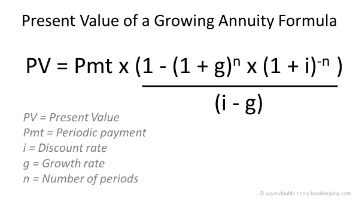
Explore the role of FASB in financial reporting, including its mission, standards, and collaboration for consistency in accounting practices. You (or your bookkeeper) record it as an account receivable on your end, because it represents money you will receive from someone else. Here’s an example of an accounts receivable aging schedule for the fictional company XYZ Inc. Accounts receivable represent funds owed to a company and are booked as an asset. Accounts payable, on the other hand, represent funds that a company owes to others and are booked as liabilities. This content is for information purposes only and should not be considered legal, accounting, or tax advice, or a substitute for obtaining such advice specific to your business.
It includes tasks such as tracking invoices, collecting payments, examining and mitigating credit risks, and resolving disputes. Unfortunately, it can be difficult to anticipate payment issues, non-payments or late payments. If you only react after the payment is missed, you could be leaving money on the table in that accounting cycle. With the right processes and technology however, companies can accelerate customer payments by more intelligently targeting dunning. Poor management of accounts receivables refers to the various operation and financial issues of business that impact the receivables management efficiency . Some of the common drivers are late invoices, higher DSO, data discrepancies, inadequate credit checks, time consuming manual processes, etc.
Reduction in Bad Debt
A structured collections process helps in following up with customers who have overdue invoices. The frequency and nature of these follow-ups can vary based on the customer’s payment history and the amount due. Accounts receivable refers to the outstanding invoices your company has, which represent the money owed to you by customers for goods or services that have been delivered but not yet paid for.

What is Accounts Receivable Management?
If your accounts receivable balance is going up, that means you’re invoicing more. If the balance is going down, that means you’re collecting customer payments from previous invoices. In accounts receivable management, it offers automation for invoice creation, payment tracking, and basic analytics. It’s an profit center: characteristics vs a cost center with examples excellent fit for small to medium-sized businesses prioritizing a straightforward CRM solution. Keep your accounts receivable process simple, from invoicing to collections. A straightforward workflow makes payment processing faster and allows for easier monitoring, identification of bottlenecks, and implementation of improvements.
What are the most common challenges with AR management?
Regularly follow up on past due invoices and overdue payments, which involves tracking payment due dates and contacting clients to remind them of outstanding invoices. Try to set automatic reminders to streamline this process and minimize the chances of human error. Note that regular reconciliation of payments with outstanding invoices can help identify any discrepancies or overdue accounts. Accounts receivable are an important element in fundamental analysis, a common method investors use to determine the value of a company and its securities. Because accounts receivable is a current asset, it contributes to a company’s liquidity or ability to cover short-term obligations without additional cash flows.
ways to improve receivables management
A higher ratio means that a company is collecting its receivables more quickly, which is a good thing. Say goodbye to traditional paper billing and checks sent via snail mail. Adopting an electronic invoicing system allows clients to make hassle-free online payments. Integration of billing and payment processes streamlines record-keeping, reducing manual tracking and minimizing the risk of errors. Accounts receivable is the outstanding invoices a company has or money owed by client to the company. The term refers to accounts a business has the right receive because of goods and non-cash interest expense services delivered.
- We provide third-party links as a convenience and for informational purposes only.
- Accounts receivable is recorded on your balance sheet as a current asset, implying the account balance is due from the debtor in a year or less.
- However, paying a service provider will most likely be significantly more expensive than hiring your own staffer or contractor, or even using software in-house.
- For one, it can help you optimize your cash flow and increase your working capital.
- It supports multiple payment methods, including ACH, wire transfers, and credit cards, providing both you and your customers with flexibility.
Dive into effective AR management, discover its impact on financial health, growth, overall business stability, and find your AR management CRM solution. A high CEI indicates that your collections team is effective in recovering receivables. It’s a crucial metric that directly correlates with your cash flow and liquidity.
When it becomes clear that a receivable won’t be paid by the customer, it has to be written off as a bad debt expense or a one-time charge. Companies might also sell this outstanding debt to a third party debt collector for a fraction of the original amount—creating what accountants refer to to as accounts receivable discounted. Furthermore, accounts receivable are classified as current assets, because the account balance is expected from the debtor in one year or less. Other current assets on how to easily write a promissory note for a personal loan to family or friends a company’s books might include cash and cash equivalents, inventory, and readily marketable securities. Accounts receivable represents money that a business is owed by its clients, often in the form of unpaid invoices.
While Company A waits to receive the money, it records the amount in its accounts receivable column. For example, you buy $1,000 in paper from a supplier who sends you an invoice for the goods. You’d have $1,000 in accounts payable on your balance sheet for the invoice. Meanwhile, the supplier would have $1,000 in accounts receivable on their balance sheet. It offers a sophisticated platform for accounts receivable automation, integrating seamlessly with other SAP tools. Its strength lies in providing a cohesive approach to financial management for large enterprises.
